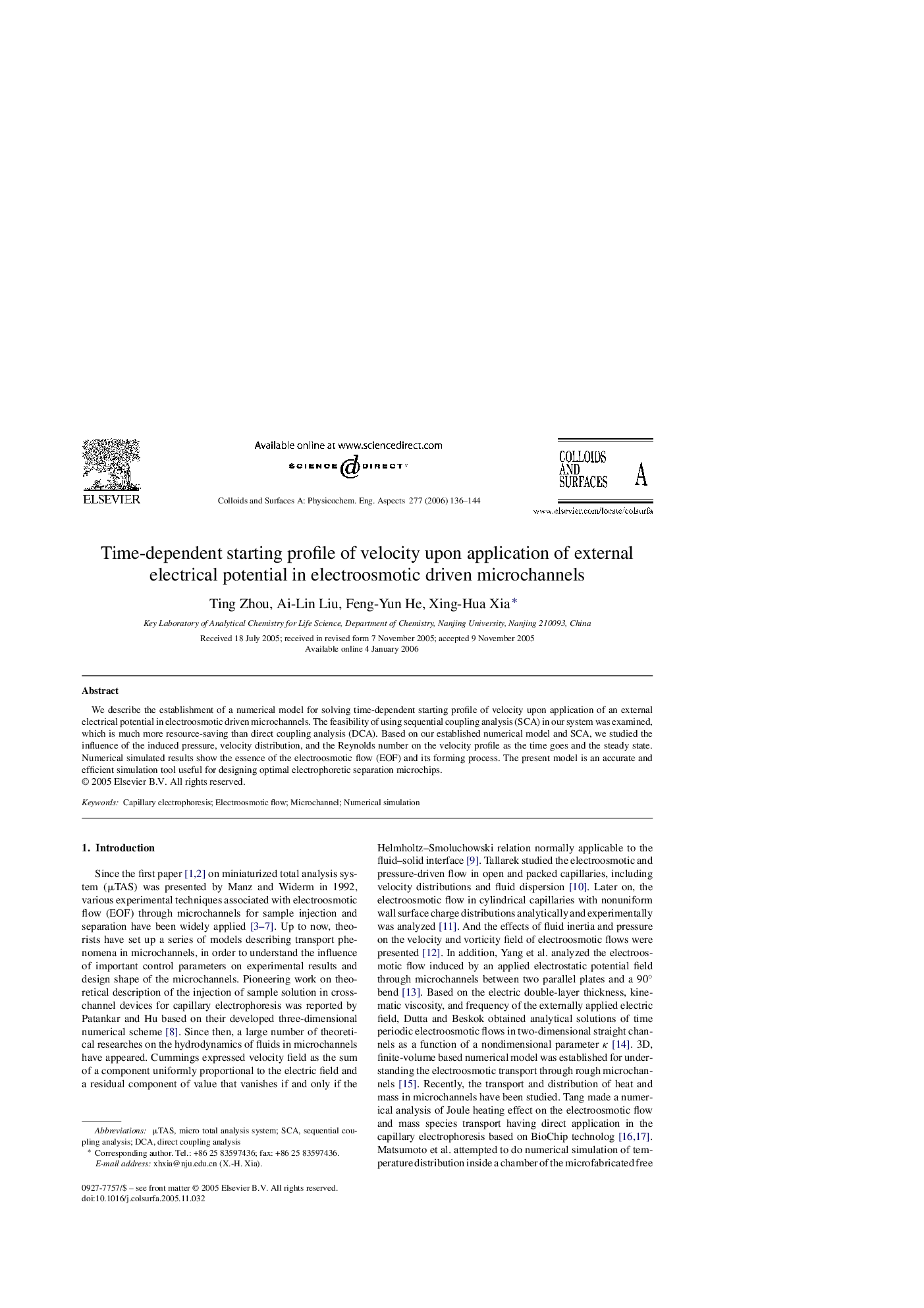| Article ID | Journal | Published Year | Pages | File Type |
|---|---|---|---|---|
| 598587 | Colloids and Surfaces A: Physicochemical and Engineering Aspects | 2006 | 9 Pages |
We describe the establishment of a numerical model for solving time-dependent starting profile of velocity upon application of an external electrical potential in electroosmotic driven microchannels. The feasibility of using sequential coupling analysis (SCA) in our system was examined, which is much more resource-saving than direct coupling analysis (DCA). Based on our established numerical model and SCA, we studied the influence of the induced pressure, velocity distribution, and the Reynolds number on the velocity profile as the time goes and the steady state. Numerical simulated results show the essence of the electroosmotic flow (EOF) and its forming process. The present model is an accurate and efficient simulation tool useful for designing optimal electrophoretic separation microchips.
